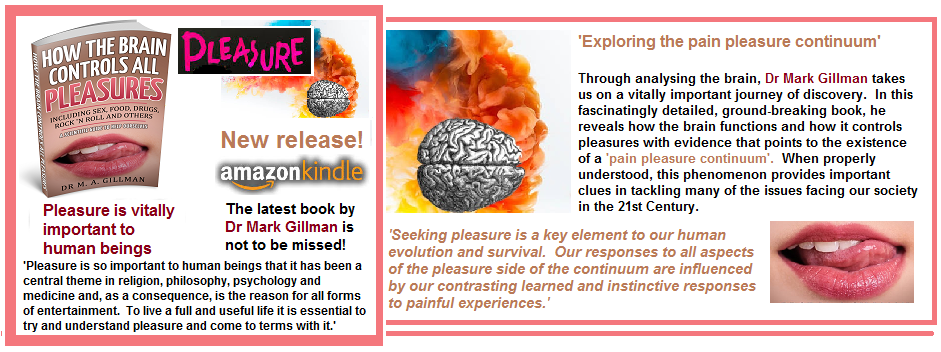Click here to order your copy of the latest book by Dr Mark Gillman!
https://www.amazon.com/dp/B07B21J7JW
Shopping addiction – ‘the urge to shop till you drop’
The disorder known as ‘shopping addiction’ occurs worldwide and even though it has been known for over a century, little research has yet been done on this form of addictive pleasure.
Consequently, only estimates of the incidence are available ranging from as low as 2% to as high as 18%. Current information indicates that there is a larger preponderance of shopping addiction in women, although this may be an artefact, because women readily admit to liking shopping and consider it to be a pleasure, while men do not.
Shopping addiction usually starts in the late teens and early twenties
Shopping addiction usually starts in the late teens and early twenties, which seems to coincide with the move away from parents and earning an independent income. It also seems to occur in families, and like other addictions, the urge to shop till you drop is simultaneously associated with various other psychiatric disorders such as alcohol or drug abuse, depression and anxiety.
People with the type of addictive pleasure known as shopping addiction become obsessed and preoccupied with shopping, as well as spending much of their time thinking about their addiction.
Shopping and spending seem to be inextricably linked
Victims of this addictive pleasure often say that they notice increasing anxiety as the urge to shop increases. It is then relieved by the sense of fulfilment after they have bought something. Many shopping addicts become very excited and euphoric, and in certain cases some admit to sexual excitement during the act of buying. However, once the act has been completed, addicts admit to negative emotions, such as shame, self-disappointment, post purchase dissonance and/or even depression. Most victims shop alone and agree that it is a private pleasure.
‘Retail therapies’
The cause of shopping addiction is currently unknown. Most of the material on possible neurobiological causes has followed research into treatments with medicines. Because research into the disorder is still in its infancy, the medicines that have been tried require further rigorous study before a definitive verdict on their efficacy can be reached. As a consequence, all the treatments that have been used with some degree of benefit can only offer a hint of the neurotransmitter and other brain dysfunctions underlying the affliction. These include antidepressants such as citalopram (a serotonin reuptake blocker), an opioid blocker (naltrexone) and drugs that act on the dopamine system.
Following these limited trials, various researchers have suggested that serotonin, the endogenous opioid system and dopamine system have some part to play in the disorder. As we have seen, serotonin may also be involved, but not necessarily as part of the actual pleasure experienced.
Most of our more definitive existing knowledge about the neurotransmitter involved in shopping addiction, and particularly its relationship to drug addiction, comes from work on Parkinson’s disease. As we know, Parkinson’s disease is caused by a loss of dopamine in the brain. It also happens that occasional side effects of the supplementary dopamine given to these patients are various excessive pleasure-driven behaviours. These include gambling, sex and shopping addiction.
An imaging study was conducted on Parkinson’s patients who had become excessive gamblers or shoppers after being given therapeutic dopamine supplements. During scanning, and following administration of a dopamine stimulant, these volunteers showed an increase in judgement errors when tested in situations where gain was possible. These judgement errors were related to increased activity in the ventral striatum (nucleus accumbens and olfactory tubercle. In the same research, other medicated Parkinson’s sufferers, who were free of similar behavioural side effects, did not display these changes.
In other research using a gambling test, similar contrasting results were seen. Here, when the addicted patients were tested, there was a tendency for them to take greater risks. At the same time, their chancier choices produced less activation in the orbitofrontal and anterior cingulate cortical regions than in their non-addicted Parkinsonian peers.
Furthermore, administration of dopamine medication during imaging in addicts enhanced their sensitivity to risk, while the opposite was noticed in the other patients. These workers concluded that there was a greater tendency to risk-taking in the addicted patients, but only when riskier behaviour promised greater gain; however not when there was a possibility of both loss and gain. The dopamine stimulants seem to change an inherent issue rather than merely impinging on the conscious estimation of risk. They also suggest that the reduced ability to weigh risk occurs as a consequence of a disassociation between activity in the ventral striatum and orbitofrontal cortices.
Very little additional work has yet been done on the neuroscience of shopping addiction, and much more is needed. In particular, if future research confirms the preponderance of the illness in females further study of the neural and other actions of the sex hormones may provide interesting insights into the brain dysfunction causing shopping addiction.

